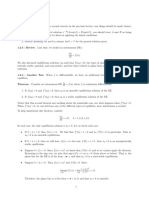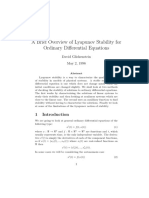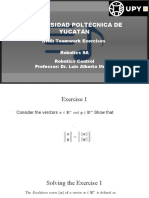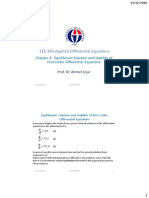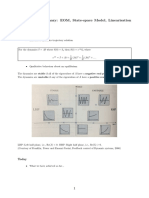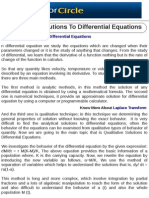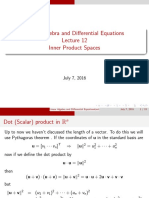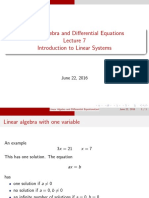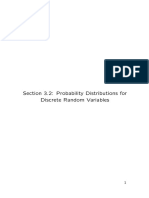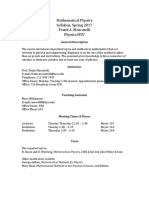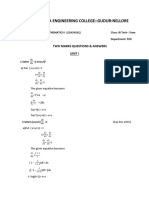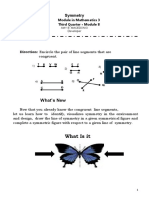0% found this document useful (0 votes)
45 views17 pagesLADE5 Qualitative Methods
This document discusses qualitative methods for analyzing autonomous differential equations. It begins with an example equation and discusses equilibrium points and their stability. Graphing the equation allows identification of stable and unstable equilibria. Linear stability analysis examines behavior near equilibria. Applications to physics using potential energy are described. The document also discusses logistic growth models and bifurcation diagrams to summarize behavior as a parameter is varied.
Uploaded by
Roumen GuhaCopyright
© © All Rights Reserved
We take content rights seriously. If you suspect this is your content, claim it here.
Available Formats
Download as PDF, TXT or read online on Scribd
0% found this document useful (0 votes)
45 views17 pagesLADE5 Qualitative Methods
This document discusses qualitative methods for analyzing autonomous differential equations. It begins with an example equation and discusses equilibrium points and their stability. Graphing the equation allows identification of stable and unstable equilibria. Linear stability analysis examines behavior near equilibria. Applications to physics using potential energy are described. The document also discusses logistic growth models and bifurcation diagrams to summarize behavior as a parameter is varied.
Uploaded by
Roumen GuhaCopyright
© © All Rights Reserved
We take content rights seriously. If you suspect this is your content, claim it here.
Available Formats
Download as PDF, TXT or read online on Scribd
/ 17


